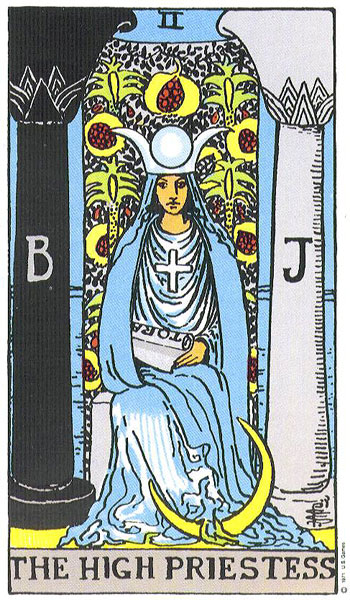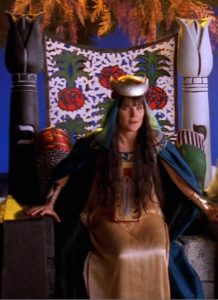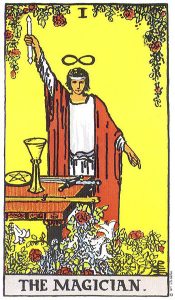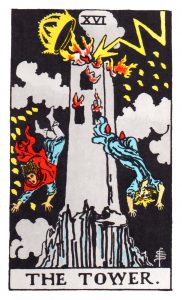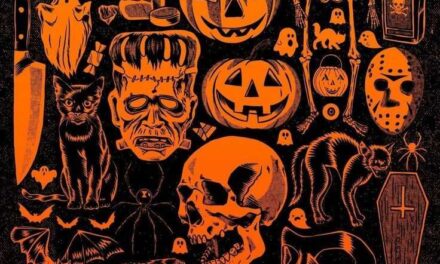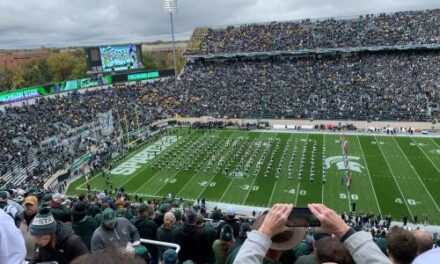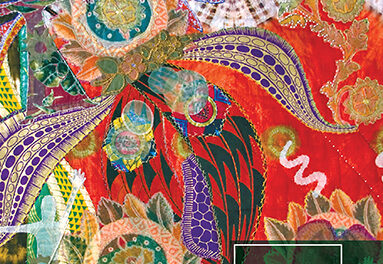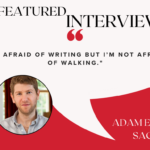Musings by José Angel Araguz
Episode 5: Tarot
In this episode, I do a quick study of the ways I see tarot being connected to poetry. As tarot is more complex than can be contained in one blog post, I will focus on my personal experiences with two cards in particular and how I see them relating to poetry writing.
But first, some basics:
A Brief Tarot 101
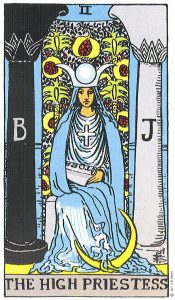 History: While the tarot card system goes back to the fifteenth century, the tarot as it is practiced today has a history that is only a little over a hundred years old. Today’s main tarot-as-divination methods are split between two camps: practitioners who use the Rider-Waite-Smith deck, and those who use the Crowley-Harris Thoth deck. As the RWS is the most prominent in popular culture, its images and interpretations the most readily familiar, I’ll be referring to that deck. (Case in point: Xena: Warrior Princess’s take on the High Priestess.)
History: While the tarot card system goes back to the fifteenth century, the tarot as it is practiced today has a history that is only a little over a hundred years old. Today’s main tarot-as-divination methods are split between two camps: practitioners who use the Rider-Waite-Smith deck, and those who use the Crowley-Harris Thoth deck. As the RWS is the most prominent in popular culture, its images and interpretations the most readily familiar, I’ll be referring to that deck. (Case in point: Xena: Warrior Princess’s take on the High Priestess.)
How It Works: Tarot presents a system of symbolic images that are used for divination and as tools for meditation. Typically, a deck will have seventy-eight cards divided into two groups or arcanas (“hidden truth” or “secret knowledge”). The first group, called the Major Arcana, comprises twenty-two cards. Starting with The Fool (card zero) and ending on The World (card twenty-one), the Major Arcana is often seen as representing the fool’s journey—a journey through life in which the Fool gains wisdom as they overcome obstacles. The second set of cards, known as the Minor Arcana, consists of fifty-six cards divided into four suits (similar to traditional playing cards). As my discussion below will focus on two cards from the Major Arcana, I will not spend more time on explaining the Minor. (Anyone interested in learning more about tarot in general, please check out the links throughout this article.)
Tarot & Poetry
I: The Magician
As the site Biddy Tarot explains:
The Magician is associated with the planet Mercury and carries with it skill, logic, and intellect. The number of the Magician is one, the number of beginnings. The Magician is the bridge between the world of the spirit and the world of humanity. . . . He takes the power of the Universe and channels it through his own body and directs it to the physical plane.
As can be seen in this brief description, this card implies action and manifestation. Mercury, as an element, is never still, always in motion; in a similar way, I see the poet in the initial act of writing a poem evoking this constant motion. The Magician is all about sitting down to the materials at hand and making use of them. The first draft of a poem can be seen as a setting down of the initial elements, seeing what there is to work with.
This view on the Magician/poet brings to mind a quote from Robert Bly, who in an interview sums up the creative act in terms of dancing:
There is a dancing among all the experiences you’ve ever had and a dancing among the gifts you’ve received from your family, from the wider culture, from your reading. And then the hope is that you can begin to work yourself back into your own life.
When I come across the Magician in a tarot spread, I immediately interpret the card as directing me to do the “poet” work of bringing together the elements of a given moment or reading to see them as a whole. Writing a poem, comparatively, can be seen as doing “Magician” work, conjuring the raw materials for inspiration and seeing how they “dance.”
As Biddy Tarot explains:
The Tower signifies darkness and destruction on a physical scale, as opposed to a spiritual scale. The Tower itself represents ambitions built on false premises. The lightning bolt breaks down existing forms in order to make room for new ones. It represents a sudden, momentary glimpse of truth, a flash of inspiration that breaks down structures of ignorance and false reasoning.
Considered one of the darker and more fateful cards in the Major Arcana, the Tower brings with it a sense of reckoning. In terms of poetry, I see this card as associated with revision. Sometimes the “ambitions built on false premises” that make up the first draft are hard to break free from. This is where the Tower’s informal “destruction” via lightning bolt becomes necessary. Lightning occurs randomly; similarly, an insight into a poem can also come randomly, striking when one is not expecting. The value of revision, then, can be seen as making opportunities for such lightning to strike.
The waiting involved in revision is how this “Tower” work differs from the more active “Magician” work. The distanced nature of revision is also implied by the Tower. If “Magician” work is done on a personal level, “Tower” work is done on an impersonal level. Or, one can say that a poem is revised in an impersonal manner until it becomes personal again. This take on revision echoes what Donald Hall said in an interview:
If the poet wants to be a poet, the poet must force the poet to revise. If the poet doesn’t wish to revise, let the poet abandon poetry and take up stamp-collecting or real estate.
Hall’s stern and task-oriented tone here is totally in line with the Tower.
*
For further insights into the connections between poetry and tarot, check out this article by poet, tarot, tea leaf reader, and creative mentor Tabitha Dial. Along with making connections between poetry, tarot, and Jung, Tabitha shares some tarot-oriented writing exercises.
Also check out The Poet Tarot from Two Sylvias Press.

